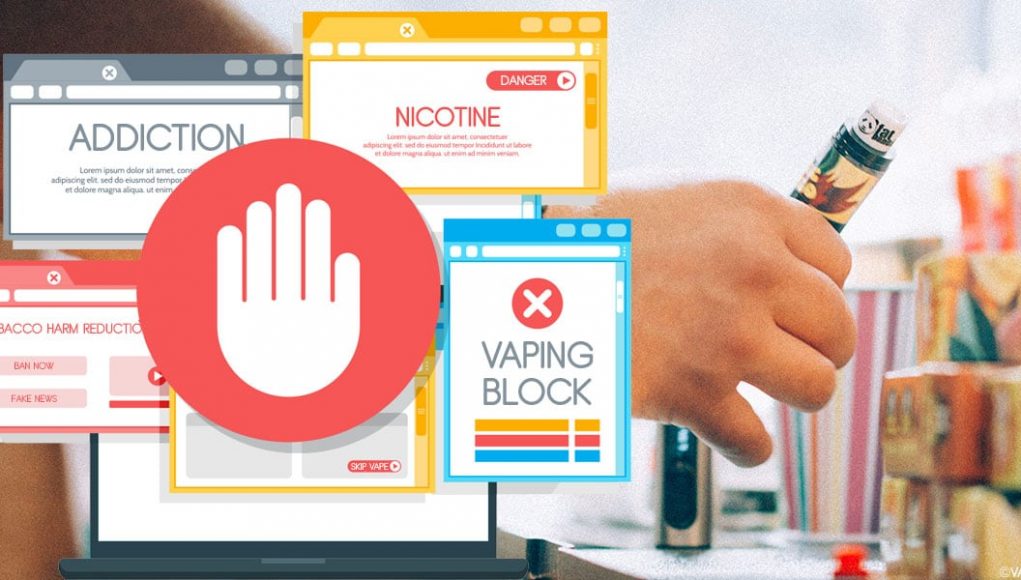There is no doubt that specific public health regulations are required to protect the population. From banning toxic materials in consumer goods to issuing mandatory occupational health guidelines, the public policy justifications of particular laws and regulations can indeed be warranted. Under the current trend toward global prohibition against lower-risk nicotine products like e-cigarettes and vapes, there is a viable case for questioning what constitutes a public health ban.
In most jurisdictions around the United States, there are various forms of smoke-free and clean air policies that restrict cigarette and vaping use in public spaces. Barring the exemptions to social clubs, bars, and other types of private establishments, smoke-free policies are widespread and quite common. Since the declaration of an epidemic associated with youth vaping, the states and localities have found a new target. Even though the rights of an elected government endowed by their constituencies grant the powers to regulate vaping within home-rule jurisdictions, these policymaking “fads” usually are taken to the extreme.
The proposed vaping ban in San Francisco
For the case of vaping, the most recent instance of policymaking and electoral pandering can be found in San Francisco, CA. As Shannon Palus wrote for Slate last week, the city council is considering a total ban on e-cigarettes until the Food and Drug Administration (FDA) approves certain vapes under scientific review and determine the public health role these products should hold. City Attorney Dennis Herrera, one of the proposing lawmakers, notes that vaping sales within the limits of San Francisco should be halted immediately to prevent further abuse by youth users while the FDA takes a more substantive stance on premarket approvals.
Along with the proposed total ban on e-cigarette sales, Herrera and Supervisor Shamann Walton announced a package of proposed ordinances that would ultimately outlaw the entire local industry. Controversial (even among the vaping industry) Altria-backed Juul Labs is also a target as the proposed legislation seeks to ban the sales, manufacture, and distribution of e-cigarettes and tobacco products on property private companies lease from the city. In consequence, the legal implications are potent enough to cause concern for firms like Juul, even independent ones, which may operate in developed commercial and office zones owned by the City of San Francisco. The framework presented ultimately targets the e-cigarette industry exclusively while leaving carve-outs for the sale of more dangerous combustibles within city limits. By further consequence, the proposal for an outright ban of one category of nicotine products is a case of political grandstanding feeding off the backs of moral outcries brought on by campaigns of misinformed hysteria.
Even though the rights of an elected government endowed by their constituencies grant the powers to regulate vaping within home-rule jurisdictions, these policymaking “fads” usually are taken to the extreme.
Dismissing the rhetoric, the proposed ban in its current form is a textbook example of public health policy gone awry. Palus notes in her column that Herrera and Walton fail to recognize the public health benefits that e-cigarettes can have from the harm minimization perspective. A consensus among a growing body of academic work collectively concludes that e-cigarettes could have population-level improved health outcomes given the absence of combustion, thousands of harmful substances, and actual tobacco leaves. The denial of such findings is evident, as it appears, and lends the assumption that harm reduction is not on the agenda for the city’s government.
“Selective policing”
The editorial board of the San Francisco Chronicle argues: “San Francisco has a decidedly selective way of policing healthy living.” If we dismiss the immediate case, the city government has taken effective and politically progressive approaches to drug policy. The city is a focal point of the legal cannabis industry and simultaneously still allows the sale of tobacco products at convenience stores, bodegas, and other mixed retail establishments. Illicit drug harm reduction is also on the city’s agenda by being a nationwide example for needle exchanges and promoting policies legalizing supervised injection sites. However, the latest proposal urges city officials to treat nicotine as a more dangerous public health epidemic due to the moral panic around vaping.
By common sense, this type of approach is not only ironic but additionally more harmful to public health than the actual act of vaping nicotine-containing electronic delivery systems. Harm reduction as a public health strategy recognizes the need to offer lower-risk solutions to addicted individuals — even youth in some cases — to begin a continuum of cessation. The total ban of e-cigarettes under these justifications further derives an argument that the city’s leaders are interested exclusively in the sophistry of fads brought on by moral outrage.
“Moral Panic”: the common denominator of vaping bans
If we go beyond the proposed ban in San Francisco, one will quickly see the passage of laws and regulations directly targeting vaping products at alarming rates in other states and localities. The only expected outcomes from public authorities succumbing to one-sided fears are policies that include discriminatory taxation, MLSA (minimum legal sale age) increases, retail access limitations, and indoor and outdoor use restrictions. Upon the analysis of the regulatory regimes of 10 municipalities and six state governments during preparation for this piece, the common denominator behind the political motivations to propose and pass such policies all have to do with the concept of “moral panic.”
The common denominator behind the political motivations to propose and pass such policies all have to do with the concept of “moral panic.”
Criminologist Stanley Cohen declares a moral panic as “a condition, episode, person or group of persons [that] emerges to become defined as a threat to societal values and interests.” Contemporary examples of this can be found with the Trump administration’s broad characterization that illegal immigrants are all violent criminals or the justifying arguments behind the recently voted down Green New Deal proposal brought by House Democrats. The truth of these cases, however, prove to be mere political talking points meant to address a mutual fear held by vast swaths of the public owed to exaggerations by societal institutions like the media. Most illegal immigrants are not violent criminals, and the Green New Deal was overly idealistic and lacking the necessary substance for passage.
The same logic applies to e-cigarettes and the recent fears surrounding the claim that vaping is killing America’s youth. Cohen defines five stages of moral panic in his 1972 work Folk Devils and Moral Panics (I paraphrased the stages for the sake of this analysis):
- Something or someone is defined as a threat to society and the social norms of the majority.
- Media outlets then depict this threat in familiar and recognizable symbols and messages.
- The depiction of this threat then rouses public outcry.
- Lawmakers, regulators, and other authorities respond to the public outcry.
- The moral panic and the resulting response from authorities causes social and economic changes to society.
While these stages present the process of how a panic develops, many times the panics are results of irrationality and perceptions of losing control over a particular part of society. Cohen developed this theory to understand the public response to media, but the deviation from the main point is justified. E-cigarettes and vaping, in turn, succumbed to the stages of moral panic. If one further applies the concept of the “deviancy amplification spiral,” results will show that such a moral panic is a standard media hype scenario. The deviancy amplification spiral is defined as “a process, often performed by the mass media, in which the extent and seriousness of deviant behavior is exaggerated.” Deviance, under this theory, does allude to criminal or antisocial behaviors. Considering the context of the legislative and regulatory responses documented here, the deviancy is the act of vaping with its apparent appeal to youth, and the declaration of an epidemic sees the amplification.
At all levels of governance, in this case, e-cigarettes are now the favorite “sin” behavior that must be controlled because vaping among youth is apparently rampant. Despite data projections from federal youth substance abuse surveys suggesting otherwise, just the fact that there is an uptick in experimental use somehow justifies restrictions and San Fransico’s proposed total ban. A troubling trend, to say the least.








